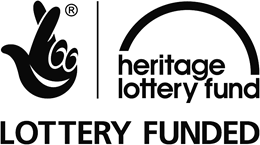A brief history of St Barnabas Church
Heigham
Heigham is said to derive its name from 'ca' or 'hea' - 'ham' signifying 'the village by the water', with 'ham' being the Saxon for village.
The mother church, dedicated to St Bartholomew, stood on a slight eminence above the River Wensum at what is now the junction of Heigham Street with Northumberland Street. The principal part was built in the early 15th century and was of perpendicular style. On the 27th April 1942, air raids resulted in the destruction of St Bartholomew's Church Hall and the devastation of the Rectory. Two days later the parish church was gutted by fire through enemy action. The tower, which is all that now remains, is about 45 feet high and is one of the few square ones in the eastern counties built entirely from flint with no freestone quoins.
At the beginning of the 19th century, the parish or hamlet of Heigham extended from Hellesdon on one side to Earlham, Eaton and Lakenham on the other. The population in 1801 was only 544, but by 1861 it had risen to 13,893. Owing to this growth, it became necessary to divide the parish into three separate districts. Accordingly, in 1866, a Mission Church was opened in Derby Street accommodating 200 persons. In 1867, the southern part of the parish was made into a separate district, and in 1868, a further district was formed out of the middle portion.
St Bartholomew's offered seating for only 200 persons, but was left with a remaining population of over 6,000. In 1870, a temporary church was erected in Adelaide Street seating 500, but by 1878 the population was almost 8,000. Therefore it became necessary between 1876 and 1878 for the old parish church to be restored and enlarged. In 1888, St Thomas' Church was consecrated and there was known to be a Mission Room on the east side of Sayers Street around 1899.
St Barnabas Church
The first job of the Bishop's Committee, appointed in January 1899, was to keep a watchful eye on the increasing population of the suburbs, with a view to the timely provision of new churches and more clergy. One year later, a first statement and appeal appeared. Writing about the overgrown parish of Heigham, the Bishop, the Right Reverend John Sheepshanks, said, "The work of the Church must be inadequately carried out in a parish where the incumbent (Reverend D.W. Mountfield, Rector of St Bartholomew's) has a population of 12,000 souls, almost wholly poor, one very small church at the extreme end of the extensive parish and one mission chapel..." A scheme was drawn up by the Bishop's committee to constitute, out of the existing parish, a new district east of Old Palace Road to include a population of 6,000.
On 11th June 1903, the foundation stone of St Barnabas Church was laid by Mrs Margaret Sheepshanks and by September 1904 only £1,000 or so remained to be raised in order to complete the west end. In 1906 the building was completed, apart from the vestries, and was consecrated on 25th January. It comprised a nave, chancel, aisles and clerestories, baptistry, porches, and bell-cote, and was built in a modern perpendicular style. The materials were flint and stone. There were 500 sittings.
The nave roof was of double hammer beam construction whilst the chancel roof was wagon headed and panelled with carved bosses. there were crosses at the gable ends of both chancel and nave. The floor was terrazzo, laid by Italian workmen.
In 1910, the vestry and organ chamber were added and dedicated by Bishop Sheepshanks in his last official appearance in his capacity as Bishop of Norwich. Initially, the font, pulpit, lectern and organ were temporary and replaced at later dates.
The cost of building the church, including the site, had been in the region of £6,000 and was met by grants, donations and fund-raising.
Part of the southern side of St Barnabas Church was significantly damaged during the Second World War. Services were held at St Margaret's Church, St Benedict's Street, whilst the major aspects of the repair work were carried out between late 1950 and early 1951. The church was reopened in June 1951.
St Barnabas Church War Memorial
At the west end is the War Memorial Chapel. The War Shrine was made in 1919 and is gilded with the names of the Fallen from the First World War. The shrine was a a thank-offering from Reverend Samuel F. Leighton Green, Assistant Curate who also served as a Forces Chaplain. Names from the Second World War were added to the side panels in 1946. In 1995, names of the B24 Liberator Crew, who were killed on 24th November 1944 in this parish, were also added to a side panel. Next to the memorial there is a framed photograph of Reverend. Green. A wall memorial plaque is inscribed with the pre-1940 Army Chaplains' Departments' cap badge, a Maltese cross surmounted by a crown, and their Latin motto 'In this sign we conquer'.
The East Window
The seven light stained-glass East Window was dedicated in 1920 and is in memory of those who lost their lives in the Great War. The scene in the third light is of 'Gethsemane' whilst the fifth light is the 'Road to Calvary'. Between is the 'Easter Morning announcement at the Sepulchre' and above is 'Ascensiontide'. The first light shows St, Michael and the seventh is St. George. In the second light is St. Martin and the sixth is St Nicholas. It was designed by C.E. Kempe and Co Ltd.
Text taken from St Barnabas Church - a Brief History and Guide by Terry Burkill
Useful links
The Norwich War Memorial Trust
